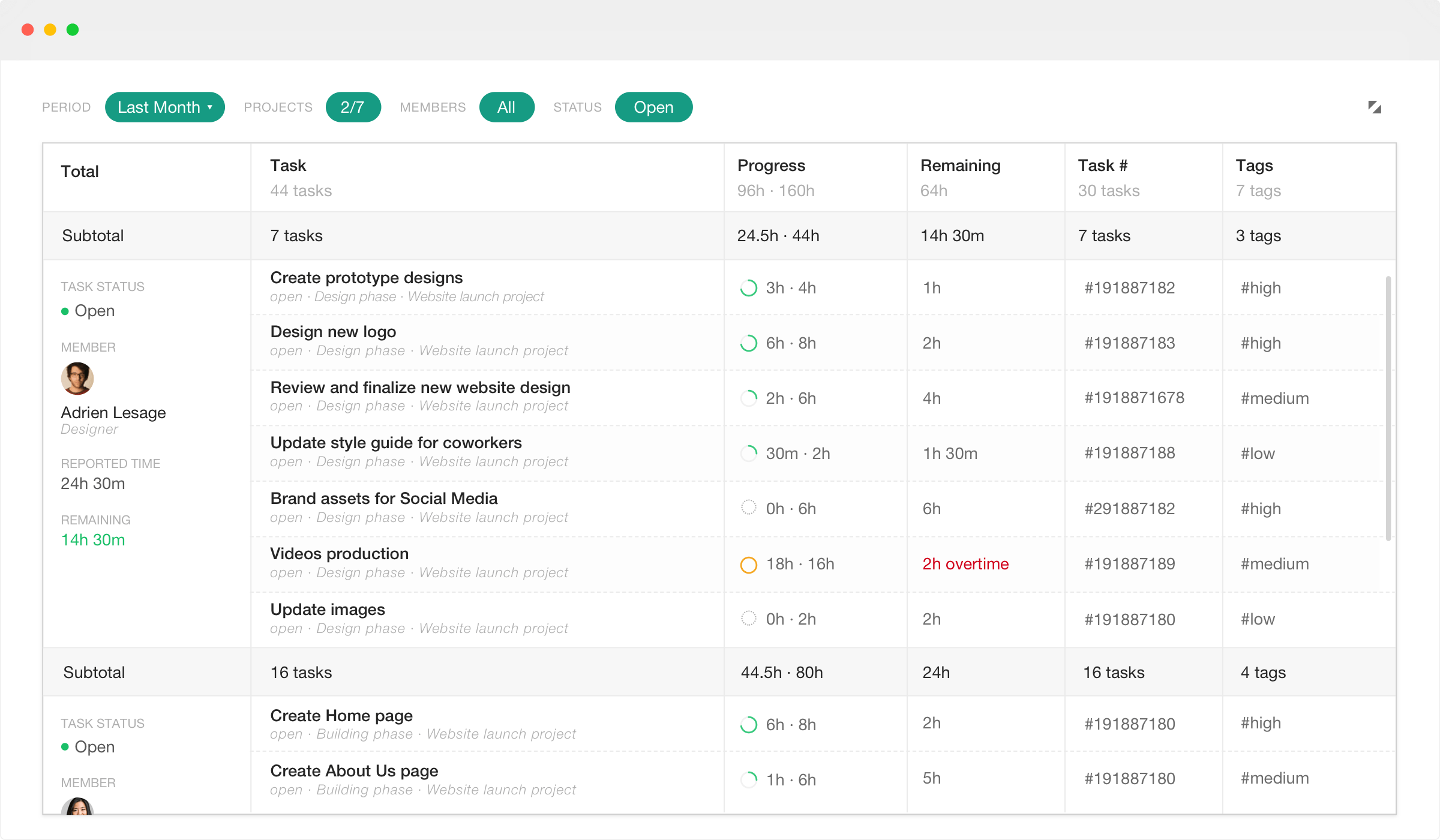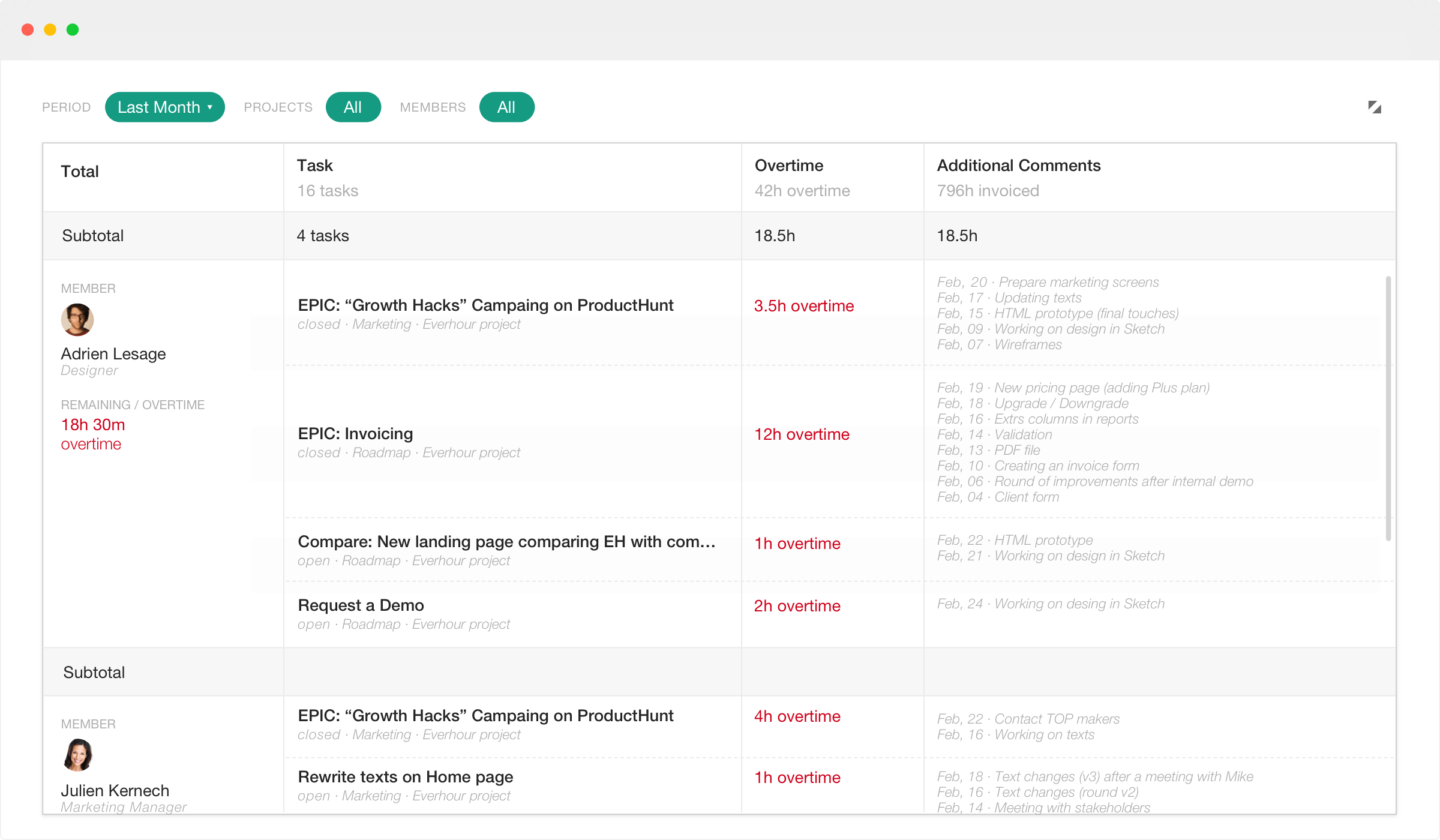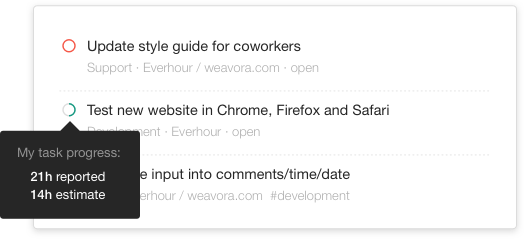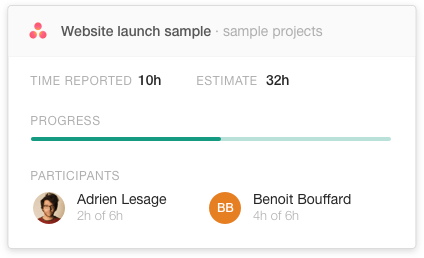“Workers Are Bad at Filling Out Timesheets, and It Costs Billions a Day” according to Harvard Business Review
One of the biggest management catches 22’s is the balance between tracking your employees’ time and still keeping them happy by providing autonomy and the opportunity for remote work, etc.
When managers track employee time, employees can feel micromanaged, but without time tracking, managers feel helpless and lost about the work product.
The reality, though, is that tracking employee time is actually a really beneficial thing for most businesses, and a great thing for employees as well.
The article explains:
- Benefits for Managers
- Benefits for Employees
- Legality and Trust with Employee Time Tracking
- Helping Employees Understand the Benefits
- Putting the Tools in Place
Benefits for Managers
Time tracking may be one of the most important things for managers. There are a number of reasons why.
Company Needs (1/6)
First, managers need accurate pictures of the needs of their staff. Without quality time tracking, managers are trying to work in the dark. They can’t understand what the needs are or deploy resources to meet those needs.
The less information the manager has, the harder it is to keep control of the systems that are in place, and management becomes more and more complex. But with the right time tracking information in place, managers are able to evaluate needs, prepare for sprints, manage output, and assign tasks.
Time tracking frees the manager to make decisions for the staff so that the whole system runs smoothly.
Everhour is the top choice for small businesses and small to mid-size teams of 5 to 50 members, including professionals like software developers, marketers, designers, consultants, lawyers, you name it! Use it for time tracking for staffing agencies!
Client Reporting (2/6)
Second, most managers who deal with client interactions need ways to report employee output. Without some sort of time tracking, they can’t unravel all the complexities of the work of their employees.
No matter how it may sound, the customer is not always located in your office and does not always see how hard your employees are working. Their perception becomes the reality, in terms of client relationships.
If deadlines are missed or costs increase, the client may start to have doubts about the supplier.
So communication and transparency are very important for client relationships, and employees don’t always understand that point.
With excellent time tracking, clients can see data points, understand where production is happening, and track progress in real-time with clarity. The more clarity and transparency there is, the more trust will be nurtured.

Manager Bias (3/6)
Third, managers are trying to be impartial. But without some sort of tracking method built into the company’s DNA, the manager can easily be accused of bias between different employees.
Employees can make countless accusations and the manager is helpless to give an answer because of the lack of data.
Employees can feel like they are being mistreated when the reality is that the manager is just trying to keep production high, and the weakest links in the chain are looking for excuses. Time tracking helps to take this problem away completely.
Clear information about employee production makes comparisons between employees simple and straightforward.
Easy Reviews (4/6)
It seems like every manager in the world dreads reviews. They take a lot of time to put together, and for the most part, any points of growth can be hard for employees to hear. The reason for the stress is the lack of concrete and clear data to help evaluate employee output.
Because there are no data, the employee might feel like they’re being evaluated by the manager’s pet peeves instead of by real production.
Time tracking solves all of this because it allows managers to start with real concrete data like work products, billable hours, deadlines, etc., and present products to the employees with clear numerics.
It takes the guesswork out of the process and helps employees understand the basis for the review.
Estimating (5/6)
Most people tend to either over or underestimate. The problem with arbitrary estimating is that there’s really no basis for the estimate. The variables around employee work speeds and human resources make it quite difficult to be accurate. If you are a development/consulting firm, your clients may often want a total project estimate, or yet another iteration before they sign a contract.
What’s more, without time estimates, an employee may make assessments about a project without actually knowing what the needs are or the time it will take. This means that the employee will struggle to complete the project in an accurate way.
The advantage of time tracking is that the manager begins to build a systematic understanding of employee output. With those data points, managers and employees are able to better understand how to estimate based on the project type, and employees will begin to learn the benefit of proper time management and will grow in self-improvement.

Billing (6/6)
Billing is complex without a time tracking system. If your business model is completely project-based, time tracking may not be critical, but it’s still useful to know how much time your regular operations take in order to keep your project cost relevant.
However, if you offer any kind of per-hour work product at all, time tracking is a critical part of billing.
When the billable hours are only based on the word of the employee, clients may find that the billable hours are hard to analyze in terms of productivity, and trust may be lost.
With a task-based time tracking tool, employees are able to show billable hours without having to justify the time.
Further, a good time tracking system keeps managers from missing billable hours. It simplifies the billing process so much that it can be condensed into a few simple mouse clicks, knowing with certainty that no hours are missing.
Benefits for Employees
Time tracking has quite a few benefits for employees as well. The problem is that, for the most part, employees aren’t aware of these benefits. Of course, if you’ve never tracked time before, starting and building a habit will require practice, and it will take time for benefits to appear.
Organization and Productivity (1/3)
Employees want to be productive, and they want to be rewarded for that productivity. What’s more, employees like to be directed by specific goals. Random and unspecified expectations only tend to produce frustration and anxiety, rather than giving a sense of accomplishment and work ownership.
When a good time tracking system is in place, employees are able to organize work by task, providing clarity with respect to goals, and also providing a simple and helpful tool for measuring productivity.
Fairness (2/3)
The reality is that many employees feel like work is unfair. They often feel underpaid and overworked, and there’s a general malaise about working hard for managers who don’t always recognize their achievements.
What’s more, a lot of work can go unnoticed and can, in fact, produce an unfair work environment where certain employees only work on projects where management is observing.
The situation can degenerate to uncomfortable ‘brown nosing’ on projects and real workflow can come to a screeching halt.
With a good time tracking system in place, all of this changes.
The employees can be rewarded based on the merit of their actual work level, rather than the whim of a manager, and there are no ‘pet projects’ to distract employees from the overall workload of the team. Employees are treated fairly and honestly with complete transparency.
Social Factor (3/3)
The proliferation of Fantasy Football and team gaming in office environments should tell us that employees love good competition. The problem with amorphous systems for time evaluation is that there is no true standard for evaluating success.
Where a quality time tracking system is in place, employees are able to work as a team, and have a unified purpose with a clear plan to achieve a goal with targets to meet, while at the same time having healthy competition with time used per project, billable hours, etc. Managers could even display time used on TVs in the office, increasing healthy team-focused competition.
Legality and Trust with Employee Time Tracking
One of the difficulties with time tracking arises when companies implement tools that take screenshots or monitor apps.
With a lot of companies, this is simply not a viable solution. Screenshots might be stored on external servers which allow for risk in terms of security.
When it comes to employee relations, there’s a general distaste for time tracking because it implies a lack of trust. Employees don’t like the feeling of being micromanaged and ‘spied on’, and systems that take screenshots or monitor apps keep the employee under a constant state of anxiety and stress and this crushes employee morale. There are even questions as to the legality of taking screenshots or monitoring systems with employees.
However, a task-based time tracking system can have the same overall effect but maintain employee trust and confidence by allowing freedom. Time tracking tasks allow employees to manage their own time within the expectations of the clock.
Given all the benefits for employees and managers alike, it’s smart to have a task-based time tracking mechanism built into your corporate environment that still allows employees freedom.
Helping Employees Understand the Benefits
Most managers don’t take much convincing to start using job-tracking software. But employees don’t always like it. The reality, though, as we’ve seen, is that time tracking is better for employees too. So how can managers help to make the time tracking change understood by employees? Here are some tips.
Clear Explanation of Benefits (1/4)
Help the employees understand the benefits for managers and for the entire company. Billable hours, customer reports, estimates, etc., all affect the daily lives of employees.
Explain that without these systems in place, the pressure levels on employees are arbitrary, but with time tracking in place, managers won’t feel the need to pressurize or micromanage employees. Most employees will appreciate the greater levels of freedom that come from a well-managed and tracked system.
KPIs and Incentives (2/4)
Most people like incentives, especially if they’re built right. A good, reachable, and rewarded incentive makes work fun. Work becomes enjoyable and competitive for the team and the team begins to work together to achieve incentives together.
Help your employees understand that time tracking software is actually a way to better bonus them when they’re working hard. When managers don’t know what the people are doing, it makes it hard to give bonuses for what they’re doing
Choice (3/4)
Empower the employees to choose the system that works best for them. Let them make the decisions in terms of which software has the best tools to help them succeed. Let employees test different models and find the ones that are the most smooth and seamless. Enforced software without choice can be a real morale killer.
Of course, offering choice can have its drawbacks. Just because employees like tracking time in a system, that system may not provide the flexibility to analyze data in a way that’s helpful. But offering choice and then showing the benefits to employees for the choice that works best should help resolve some of these issues.
Help to Show the Usefulness (4/4)
Employees will always do better when managers help them to understand how useful time tracking is. Explain things clearly and with transparency. Help them to understand what the issues are that make it so critical. Help them to understand the difficult position managers are in when time tracking doesn’t exist.
Good communication solves a myriad of issues. If you do it right, employees should be able to understand the need and see the benefit of time tracking software.
Putting the Tools in Place
So, how to keep track of hours worked? Choose a tool that makes tracking time as thoughtless as possible.
One of the great benefits of Everhour is that it integrates seamlessly with a host of PM software systems and does so with clarity. Employees don’t spend half their time tab-switching.
What’s more, Everhour allows for a really clear visual checking tool. Employees are able to see the time displayed next to all the task titles so that they’re always aware of what time has already been used. Rather than filling time sheets or guessing at billable, employees will have a clear picture of expectations and successes.
Regardless of which system you choose, time tracking will present some really substantial benefits to your company. Take the time to research well, test thoroughly, and implement systems so that the data you garner will be useful for managers and employees alike. Smooth and simple is good for everyone!



